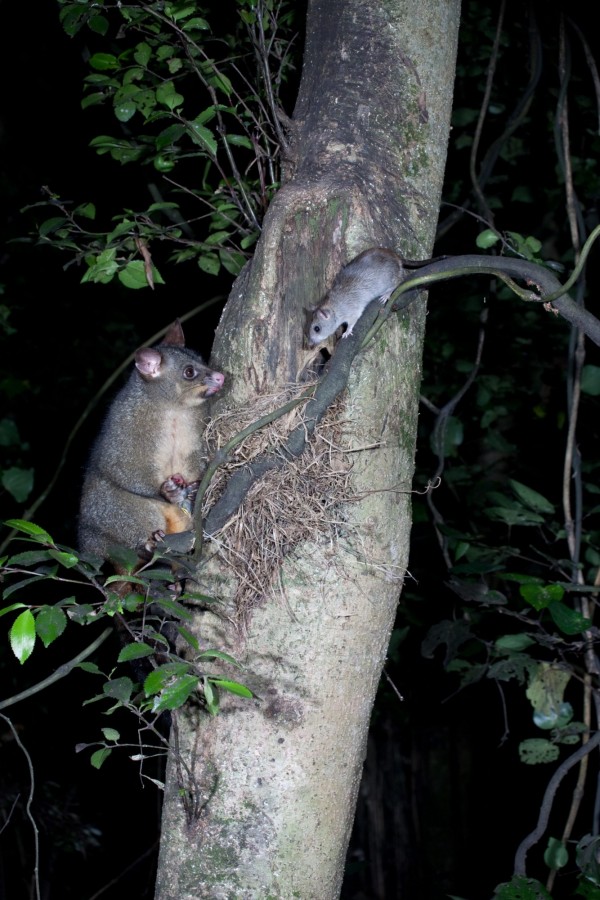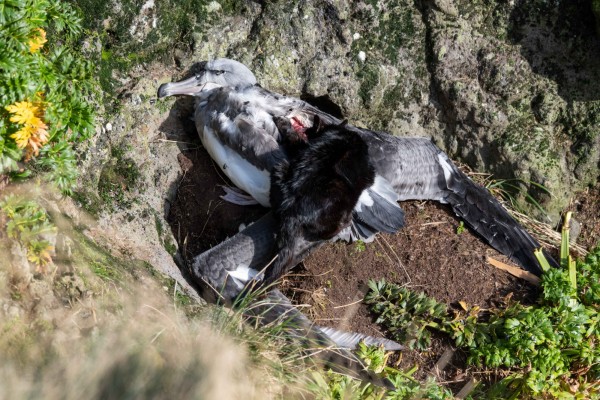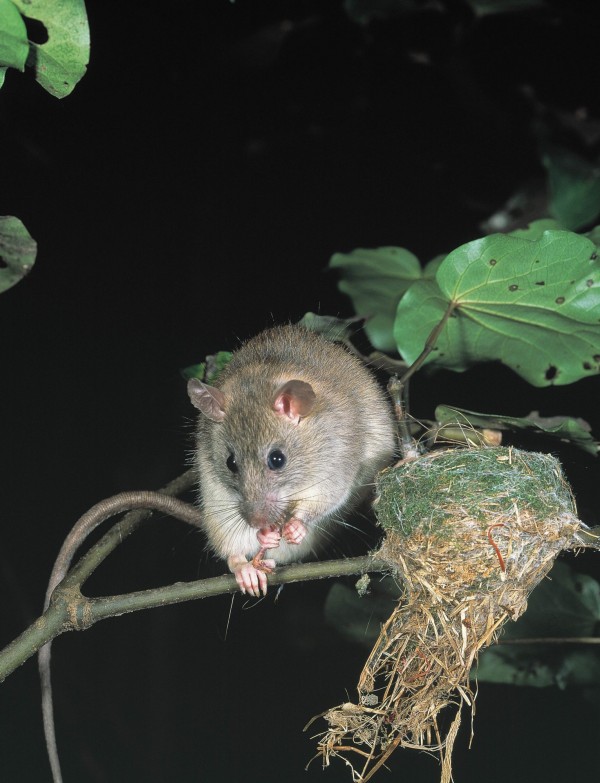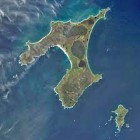
Eradicating predators
Our islands didn't evolve with mammalian predators. Many of our native species have suffered since their introduction. Removing introduced predators will help give our native birds, plants and other animals a chance to recover.
Predator Free’s end goal is the eradication of introduced predators. This means zero target predators in our habitat.
With 71,947ha of land to cover cover on main Chatham and 6300ha on Pitt, this is an ambitious and complicated goal. It's going to take a lot of planning and resources, will need to be carried out in stages, and is likely to be a multi-generational enterprise. At the end, it's going to leave these future generations healthy and thriving islands to be kaitiaki for.
Our long-term goal for the Predator Free Chathams project on Rēkohu/Wharekauri is eradication of rats, possums, and feral cats. We’re scoping the Pitt Island project, which is focused on removing feral cats to protect native birds and habitat.
What eradication means for us

A possum and rat predating on a fantail nest Image: Ngā Manu
While predator control simply keeps predator numbers in check, eradication is the complete removal of an introduced predator from an area.
Predator control can make a big difference, but history has shown it isn't always enough to protect species from extinction. Habitat restoration is also needed to make sure Chatham species have somewhere to live.
Control is also more expensive in the long run and, because the predators are still present, it will never have the same broad benefits as eradication. The upfront cost of eradication may be high, but it’s a one-off cost.
We’ve identified three predators whose removal could have the biggest positive impact for the island: possums, feral cats, and rats.
Benefits from removing these predators
- Chatham Island animals and plants can begin to recover and expand. They have a chance to grow in numbers and return to areas they used to be. This helps safeguard them from extinction, and also gives people a chance to see them more regularly.
- Habitats for native species start to regenerate and expand. Habitat and species go hand-in-hand. For example, an increase in seed dispersing birds would help support the ongoing improvement of bush.
- We can begin to see a return to the seabird-driven ecosystems that were so central to the islands. The connection between land and ocean can thrive. We’ll also start to see other ecosystems like freshwater improve.
- Regenerated bush and plants help to provide shelter from wind and soil erosion. This is great for ecosystems. It’s also great for recreation, like camping and beach walks, and for agriculture.
- New economic opportunities could start to develop, like ecotourism and employment through long-term conservation projects. Our community’s farms, orchards, gardens, water tanks and food stores will also all be safe from pests like possums and rats.
- A healthy environment leads to a healthy community. We can truly celebrate the connection we have to the land and sea and ensure it stays strong.
- Islanders are involved in developing and delivering projects for the island they live on and for future generations.
This kind of conservation work can only be a success if it happens alongside other work. Restoration projects help to restore healthy habitat, giving native plants and species a kick-start to re-establish or spread into new areas. Sharing knowledge, tools and giving our community a chance to take part ensures everyone can be involved in shaping a healthy future for our islands.

Harakeke flowers at Henga Image: DOC Jess MacKenzie
There are three key predators we are focusing our eradication efforts on.
Possums

A possum eating a kereru egg Image: Ngā Manu
Possums were introduced to the north of main Chatham in the early 1900s. Their southwards spread aligned with the disappearance of tomtit, tūī and parea, as their habitat vanished. Any islander can tell you what a pest they are. So can a huge number of native birds, insects, and plants.
Possums cause serious damage to trees and plants, eat the young of birds, and compete with native species for food. They’re indiscriminate, so it’s not only endemic species they harm. They also foul water tanks and damage veggie gardens, orchards and agricultural crops.
Of all the pest species on the Chathams, eradicating possums could provide the most benefit for plants and make a huge difference for species like parea and tūī. Many people are already carrying out possum control, but bringing resources and efforts together over time could get rid of them for good.
Feral cats

Feral cat eating a white-capped mollymawk Image: DOC Stephen Bradley
Feral cats are ruthless predators of some of our most amazing animals. Birds like parea, tūī, black robin, oystercatcher, and burrowing seabirds are all vulnerable. Many of these birds are also the seed dispersers that help bush regenerate, so when we lose these species it also makes things harder for our forests.
As seen in this image captured on the Auckland Islands, feral cats are also known to predate on larger seabirds like albatross.
Control and eradication of feral cats needs to be carefully managed. Many people have domestic cats, and we’re only targeting feral cats.
Rats

A rat predating a fantail nest Image: Ngā Manu
All three species of rats have been introduced to main Chatham/Rēkohu/Wharekauri, but thankfully haven't reached Pitt or our other islands. Rats have a huge impact on our native plants and animals, and on our daily lives. They can infiltrate our houses and food stores and damage crops. They’re also predators of native species, including insects, lizards, birds and seeds. Norway rats are the largest and are big enough to kill burrow-nesting adult seabirds, as well as eat their eggs and chicks.
Eradicating rodents is the biggest challenge. They’re small, multiply quickly, and are born survivours. There are new tools and technologies on the horizon that are making rodent eradication projects more and more straightforward. Rats are also the focus of many Predator Free projects around the country, and have been target species for previous eradication projects, so we have a network of knowledge to draw on.
The Department of Conservation shares information about some of the latest developments in eradication technology on its website.
Other pest species?
In the Chatham Islands we’re lucky not have some of the other introduced pests that are causing havoc on mainland New Zealand. For example, mustelids like ferrets, stoats and weasels were never introduced here. We also don’t have non-predator introduced species like deer and rabbits, which also damage native ecosystems. And we want to keep it that way!
The vast oceans between us and the mainland help avoid unwanted species arriving, but even then it’s still possible. That’s why biosecurity plays such a crucial role in conservation of our islands. We have information about biosecurity in our resources section.
There are some other introduced species on our island, like pigs and weka. These species are not in scope for Predator Free Chathams eradication projects.


